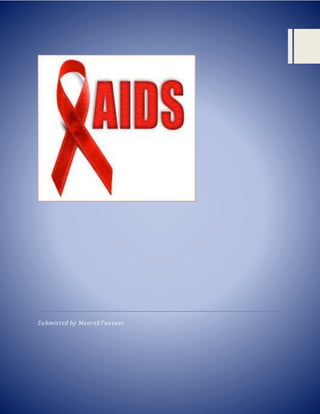This document provides an overview of HIV/AIDS, including causes, symptoms, diagnosis, treatment, and prevention. It discusses that HIV weakens the immune system, leading to AIDS if untreated. HIV can be transmitted sexually, through blood or breastfeeding. Early symptoms may include flu-like illness, while later symptoms indicate late-stage infection. Diagnosis involves blood tests to detect HIV. While there is no cure, antiretroviral treatment can control the virus and prevent transmission. Prevention methods include safe sex practices, not sharing drug equipment, and pre-exposure or post-exposure prophylaxis. Proper treatment and adherence are important for long-term management.











